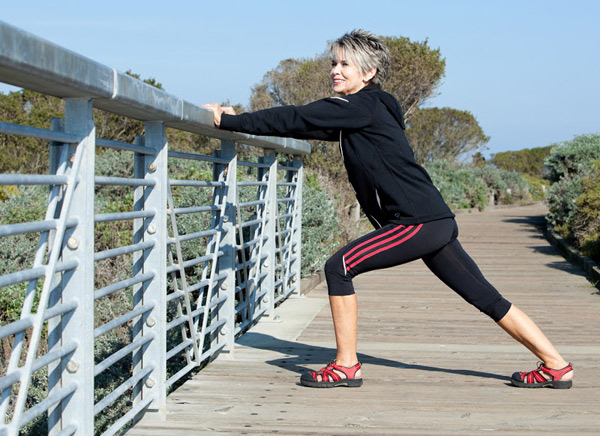
Physical activity is an inexpensive, noninvasive strategy for disease prevention advocated by public health agencies around the world, with recommendations to be physically active at least 150 minutes per week at moderate intensity or 60 to 75 minutes per week at vigorous intensity for overall health. Postmenopausal women may derive unique benefit from exercise because body fat, abdominal fat and adult weight gain have been associated with increased risk of postmenopausal breast cancer, according to background in the study.
Christine M. Friedenreich, Ph.D., of Alberta Health Services, Canada, and colleagues compared 300 minutes of exercise per week with 150 minutes per week of moderate to vigorous aerobic exercise for its effect on body fat in 400 inactive postmenopausal women who were evenly split into the two exercise groups.
The women, who had body mass index (BMI) 22 to 40, were asked not to change their usual diet. Any aerobic activity that raised the heart rate 65 percent to 75 percent of heart rate reserve was permitted, and most of the supervised and home-based activities involved the elliptical trainer, walking, bicycling and running.
Average reductions in total body fat were larger in the 300-minute vs. 150-minute group (by 1 kg or 1 percent body fat). Subcutaneous abdominal fat, as well as total abdominal fat, BMI, waist circumference and waist-to-hip ratio also decreased more in the 300-minute group. Some of the effects were stronger for obese women (BMI greater than or equal to 30) for change in weight, BMI, waist and hip circumference, and subcutaneous abdominal fat, according to the results.
“A probable association between physical activity and post-menopausal breast cancer risk is supported by more than 100 epidemiologic studies, with strong biologic rationale supporting fat loss as an important (though not the only) mediator of this association. Our findings of a dose-response effect of exercise on total fat mass and several other adiposity measures including abdominal fat, especially in obese women, provide a basis for encouraging postmenopausal women to exercise at least 300 minutes/week, longer than the minimum recommended for cancer prevention,” the study concludes.
Commentary: Exercise and Cancer Risk — How Much is Enough?
In a related commentary, Kerri Winters-Stone, Ph.D., of Oregon Health and Science University, Portland, writes: “Continued investigation that gets at the biological underpinnings of the relationship between exercise and disease and that leads toward a tangible prescription for exercise as preventive medicine is a key step toward further motivating the public to exercise enough. Alongside these efforts must come those that remove barriers to becoming and staying physically active; today, such work is under way. Dovetailing these endeavors will ultimately be what is needed to improve behavior enough to meaningfully lower the burden of chronic disease,” the author concludes.